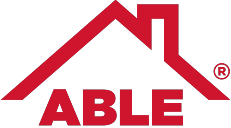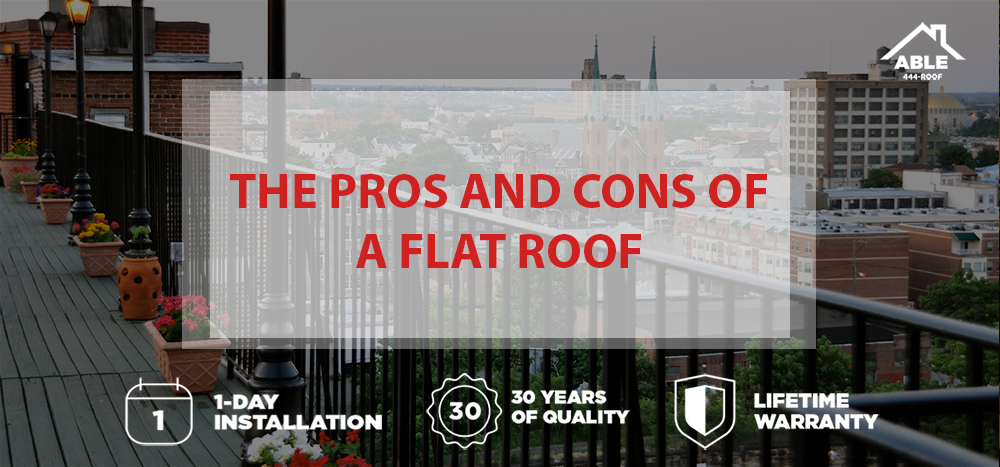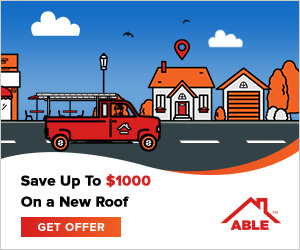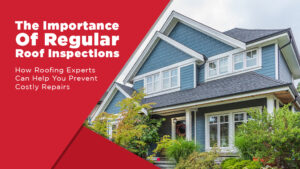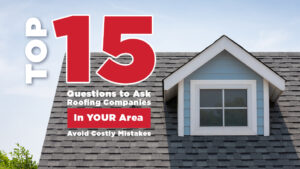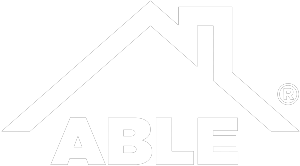Flat roofs are an aesthetically interesting and energy-efficient alternative to traditional sloped roofs. Although flat roofs pose several issues in comparison to sloped roofs, many homeowners and first-time home builders are looking increasingly favorably on flat roofs for several reasons. Flat roofs are generally versatile, easier to maintain, and more energy-efficient than most sloped roofs, so new home builders, in particular, enjoy the lower cost of long-term ownership.
However, despite their advantages, it’s vital to consider the drawbacks of flat roofs. Without the right planning and the right contractor, a flat roof can turn into a major problem. Able Roof wants our customers to understand the pros and cons of flat roofs so they can make informed decisions about their own homes. Flat and sloped roofs each have their perks and downsides, so consider your options and the long-term costs of both.
Advantages of Flat Roofs
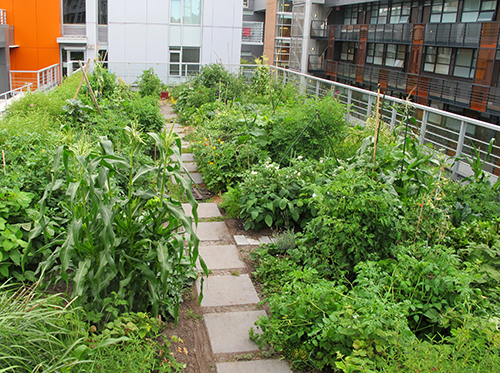 Lower construction and repair costs. Flat roofs take up less space and consequently use less material than sloped roofs. This makes initial construction cheaper but also means savings if any extensive repairs become necessary.
Lower construction and repair costs. Flat roofs take up less space and consequently use less material than sloped roofs. This makes initial construction cheaper but also means savings if any extensive repairs become necessary.- Versatility. Some homeowners turn their flat roof sections into rooftop gardens. Flat roofs are also ideal for roof deck construction. Homeowners can use a flat roof to add a beautiful addition that also provides additional weather protection.
- Energy efficiency. Flat roofs are fantastic for keeping home utility costs manageable, especially in warmer climates. While sloped roofs can trap unwanted warm air or allow cooled air to escape, a flat roof means less overhead space for air to stagnate.
Drawbacks of Flat Roofs
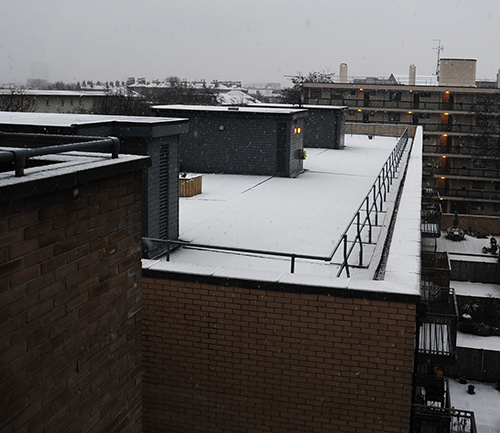 Unreliable in cold weather. Flat roofs pose homeowners several issues in colder climates. Water is more likely to accumulate and pool on flat roofs, and ice dams can cause dangerous levels of snow and ice accumulation. If you plan to build with a flat roof in a colder climate, consult your builder for weatherproofing and material options.
Unreliable in cold weather. Flat roofs pose homeowners several issues in colder climates. Water is more likely to accumulate and pool on flat roofs, and ice dams can cause dangerous levels of snow and ice accumulation. If you plan to build with a flat roof in a colder climate, consult your builder for weatherproofing and material options.- Higher chance of early replacement. Most sloped roofs will last 20 or more years with proper care, but flat roofs generally need to be replaced every 10 years or so. The National Roofing Contractors Association reports that many homeowners switch to sloped roofs for this very reason.
- “Green” roof concerns. While turning a flat roof into a garden space is a very eco-friendly and aesthetic choice, it can present problems over time with invasive plant roots. Without proper treatment, the plants can penetrate the roof and create leaking issues.
The Choice Is Yours
Every home-buyer and home-builder has a vision for his or her dream home, and a flat roof could be the perfect choice for you. Although flat roofs require more attention and tend to fare better in warmer climates, anyone can have a functional, beautiful flat roof with the right builder.
Materials, sealants, weatherproofing, and water management are all important decisions for your roof, so reach out to Able Roof’s commercial roofing experts to talk about your roof concerns. We can help you determine the right materials and weather protection for your location and design ideas, or help you turn a flat roof that’s causing problems into a more manageable sloped roof.
